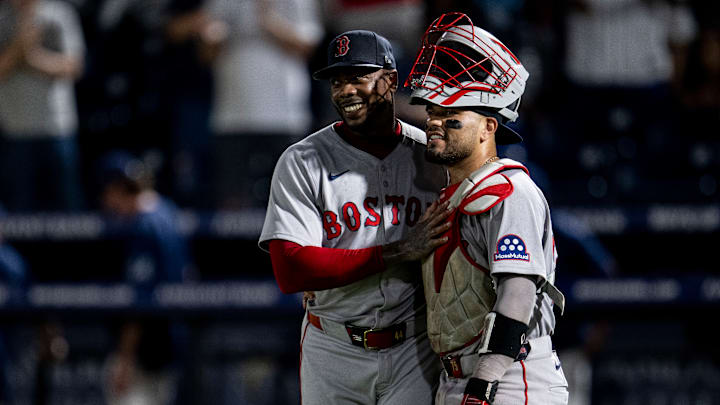MLB announced on September 23 that it will introduce the Automated Ball-Strike Challenge System (ABS) for the 2026 season. The ability to challenge umpire rulings could both benefit and hurt pitchers and batters, but catchers could see some big changes in their stats, particularly for good framers.
Catchers who excel at stealing strikes could have some of their better snags challenged by batters, including breakout Boston Red Sox rookie, Carlos Narváez. The 26-year-old ranks in the 85th percentile in framing ability, and that aspect of his elite defensive status could be affected by the implementation of the ABS system.
The ABS system allows batters, pitchers and catchers to challenge ball and strike calls made by the home plate umpire by tapping the top of their head to initiate the challenge. Players must initiate reviews on their own, without assistance from anyone, not even managers. Challenges must be requested immediately after the umpire's call is made. MLB tested the ABS system during some spring training games this year, and each team began their games with two challenges apiece. Successful challenges are retained, lost challenges are removed from a team's count, and teams are not issued additional challenges for extra innings.
Red Sox catcher Carlos Narváez and others throughout the league could see decrease in framing stats with introduction of the ABS system
Since catchers are able to challenge calls, Narváez may be able to get some borderline ones he otherwise would've missed due to umpire error, but the technology works both ways. Dodgers catcher Ben Rortvedt discussed the pros and cons of ABS technology and how catchers could be affected on the "Foul Territory" podcast.
"I think it'll take away some value (of being a good receiver) but at the same time it'll definitely make the margins valued a lot more. I think blocking will be definitely valued more, throwing will be valued more, game calling," Rortvedt said.
If Rortvedt's assessment is correct, Narváez could still be in great shape behind the dish after the implementation of ABS technology. The rookie is excellent at blocking and catching runners stealing, with 89 and 98th percentile rankings in those categories, respectively. And since teams only get two challenges per game, he may still be able to get away with some closer calls in lower-leverage moments.
Pitchers, catchers and hitters will all be affected by the ABS system, but catcher's framing rates will be an easy metric to use to measure the impact of the technology. Fans can rest assured that, in time, pitchers, catchers and batters will adjust and learn to use their challenges when they suit them best.
Regardless of any decreases in individual stats, the ABS system will allow for more correct calls in games, which will be the most significant change of all.
